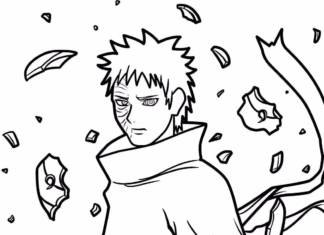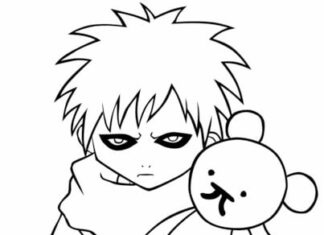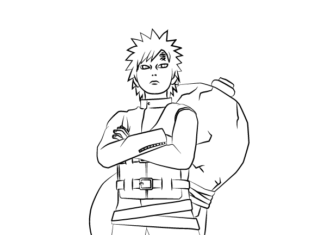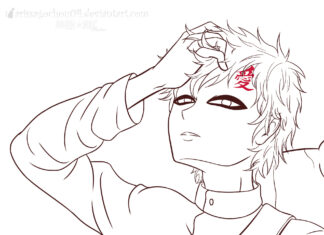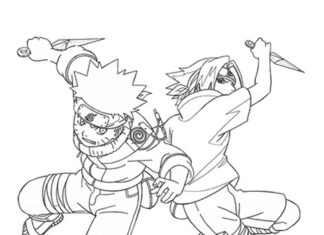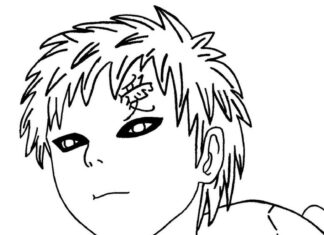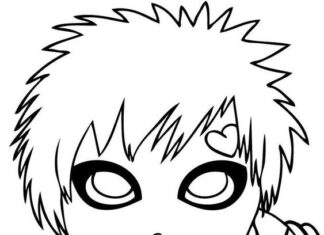Gaara is a fictional character appearing in the Japanese anime and manga "Naruto" created by Masashi Kishimoto.
Gaara coloring pages
information
- Characteristics of the character: Gaara is a ninja from the village of Sunagakure (Village of Sand) and is the son of the Fourth Kazekage. He is known for his distinctive appearance, namely the sand band on his face and the sand pack on his back.
- Sand symbol: Gaara is the jinchūrik, or host, of a demonic beast named Shukaku, who is a tail-bearer. This gives him the ability to control sand, which he can use to attack and defend himself.
- Traumatic childhood: Gaara experienced a traumatic childhood, being the result of an experiment to create the perfect jinchūriki. His mother died in childbirth, and his father treated him with hostility, leading to inner emptiness and aggression.
- Change and development: Thanks to his meeting with Naruto Uzumaki, who reflected to him what it means to have friends and be appreciated, Gaara began to change his attitude. He became Kazekage (village leader) and became a symbol of positive change.
- Sand techniques: Gaara uses techniques related to sand control. He can create powerful attacks, defensive shields and traps using the sand he carries in a pack on his back.
- Performances in the series: Gaara is present in the "Naruto" series and its sequel "Naruto: Shippuden". His character is an important part of the plot and has contributed to many emotional moments.
- Popularity and impact: The character of Gaara has gained a lot of popularity among "Naruto" fans due to his complex history, evolution and distinctive fighting style.
- A symbol of struggle and overcoming: Gaara has become a symbol of fighting against adversity, regaining lost identity and changing for the better. His story is an example of how a strong will and support can transform even the most difficult situations.
trivia
- Character name: The name "Gaara" is inspired by the word "gāra," which means "kara" in Japanese, referring to sand, with which Gaara has a strong connection.
- First plans for the character: In the initial plans to create the series, Gaara was to be the antagonist of the main character's team, Naruto. However, his character evolved and became much more complex.
- Name symbolism: Gaara's name, "Gaara no Sabaku," can be translated as "Sand of the Desert." This alludes to his ability to control sand and to the very nature of the desert, which can be inhospitable and difficult to survive.
- Inspiration to create a character: The series' creator, Masashi Kishimoto, was inspired by demon stories and created the character Gaara to explore themes such as loneliness, identity and the possibility of change.
- Gaara's hair: Gaara's hair forms a distinctive border around his face. According to Kishimoto, the idea for this hair came to him when he saw a scary child in a playground with long hair covering his eyes.
- Character voice: In the Japanese version of the anime, the character Gaara is dubbed by an actor who goes by the same name - Akira Ishida.
- He is an inspiration to other characters: Other pop culture works, such as games and anime, feature characters that reference Gaara, indicating his influence on Japanese pop culture.
- The last sentence of the war: In the final chapter of "Naruto," Gaara has a brief conversation with Naruto in which he uses the last words of war, expressing hope for a better future.
- Tarot card: In "Naruto Shippuden: Ultimate Ninja Storm Revolution," Gaara has his own tarot card as part of a special feature.
- Symbolism of the eye: Gaara has distinctive sand lines around his eyes. They are a symbol of the difficult experiences he has gone through and his connection to the demon Shukaku.

